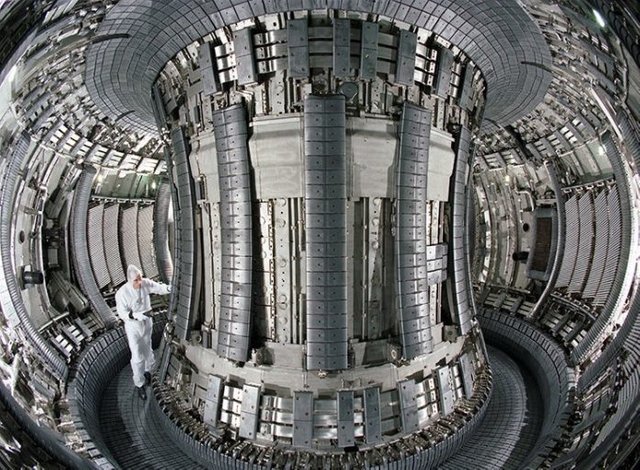Scientists solved one of the problems of thermonuclear fusion
A functional thermonuclear reactor is still a dream, but it can eventually be realized thanks to numerous studies and experiments to unblock an unlimited supply of clean energy. The problems that scientists face when getting nuclear fusion are undoubtedly serious and really complex, but everything is surmountable. And it seems that one of the main problems is solved.

Nuclear fusion is not a process invented by mankind, but a process that exists in nature from the very beginning, the process nourishes our Sun. Deep within our native star, the hydrogen atoms are arranged together to form helium, which is joggling for the process. Thermonuclear fusion releases a huge amount of energy, but it takes huge costs to create an extremely high pressure and temperature, which is difficult to control reproduced on the Earth.
Last year, researchers from the Massachusetts Institute of Technology brought us closer to the synthesis, placing plasma in conditions with the same, suitable pressure, now, two researchers from Chalmers University have opened another piece of the puzzle.
One of the problems that engineers encountered is runaway electrons. These electrons, with extremely high energy, can suddenly and unexpectedly accelerate to a very high speed, which can destroy the reactor wall without warning.
Doctoral students Linneja Heschlov and Ole Emberoz have developed a new technique for effectively slowing these escaping electrons by introducing "heavy" ions, such as neon or argon, into the reactor. As a result, electrons, colliding with a high charge in the nuclei of these ions, slow down and become much more manageable.
"When we can effectively slow down runaway electrons, we'll go one step closer to a functional thermonuclear reactor," says Linnaeus Heschlov.
Researchers have created a model that can effectively predict the energy of electrons and behavior. Using mathematical modeling of plasma physics can now effectively control the speed of runaway electrons, without interrupting the synthesis process.

"Many believe that this will work, but it's easier to go to Mars than to merge," says Linnaeusz Heschlov: "We can say that we are trying to collect stars here on earth, and this may take some time. It takes incredibly high temperatures, hotter than the center of the sun, for us to successfully achieve a fusion here on earth. Therefore, I hope that this is all a matter of time. "
Interesting stuff.
I need info about the use of photosynthesis as energy by humans. If you happen to know anything about this, let me know.
Thank you for the great post.
Interesting... Thanks for sharing.
That's a nice breakthrough. Can't they just use a strong magnetic field to envelop the reactor and avoid the electron leaks?
Have you ever looked into the integral fast reactor design?
I'm no particle physicist but can identify that all known catastrophic failures in nuclear plants have been due to cooling failures.
They produce less waste and are able to withstand complete power failures. There's even the potential to recycle old waste material with them.
Unfortunately nobody is building them!!